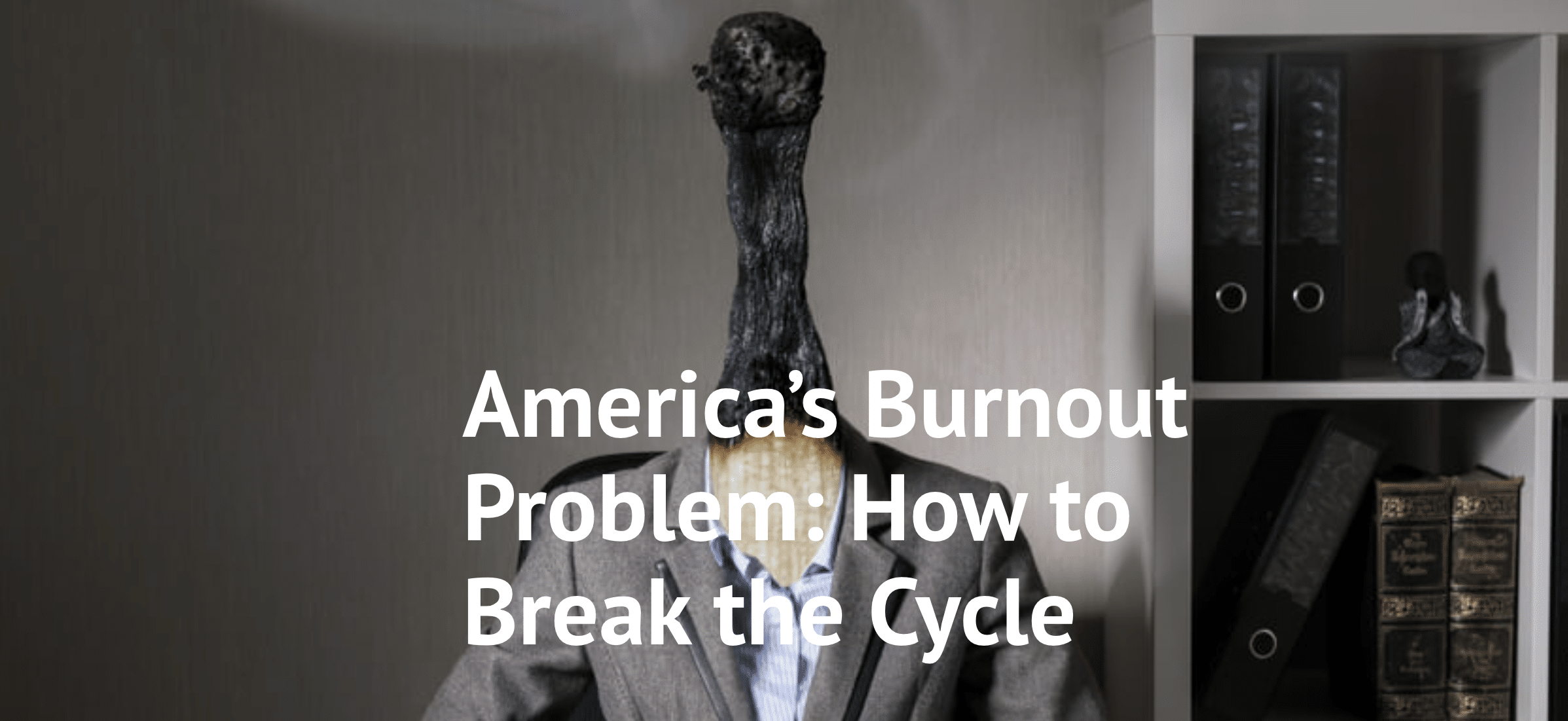America has a burnout problem. Our workplaces are not conducive to being stress-free, productive, and happy environments. This issue has become so prevalent that the World Health Organization (WHO) classified burnout as a medical condition in 2019 and included it in the 11th Revision of the International Classification of Diseases as an occupational phenomenon. According to WHO, burnout is a condition from chronic workplace stress that has been poorly managed.
Burnout, which was not called a medical condition, has been classified by three factors:
- Feelings of exhaustion and/ or energy depletion;
- Increased mental distance from one’s job; feelings of cynicism or negativism related to one’s job;
- Reduced professional efficacy.
WHY IS BURNOUT INCREASING?
The belief has shifted that workers are being taken advantage of by their employers, and as a result, they are stressed out and burnt out. Employees are also working more and feel as though they’re not being fairly compensated. Some also are being pressured into skipping vacation days or PTO to work more hours. All the while, the expectation remains that employees must respond to emails or calls outside of normal work hours. Some are working outside of their normal work hours just to keep up while companies try to do more with fewer staff.
In addition, Return to Office, or RTO, policies are likely making the burnout problem worse. According to the latest data, over half of U.S. workers state that they are stressed on a daily basis. This statistic is even higher for women- among the highest in the world. 59 percent of the global workforce is quiet quitting, over 50 percent are actively seeking new roles, and 44 percent of employees have stated that they are experiencing a lot of ongoing stress- a pattern that does not seem to be changing anytime soon when 52 percent cite that they are not engaged at work.
These increased stress levels are harming our productivity nationally and globally. We are driving our workforce to be competitive and simultaneously pushing our employees to a level where they cannot be productive and efficient while avoiding burnout. We cannot sustainably ask our employees to skip PTO without them feeling bitter, unappreciated, frustrated, cynical, and ready to quit.
We also need to rethink our RTO policies. Employees are left feeling like they are not trusted when they are told that they suddenly have to show back up in an office they have not been in since prior to COVID. The thoughts that are shared with me are simple. “How does my boss think I did my job all this time?” “If you trusted me then, why don’t you trust me now?” These are good questions that show corporate America is broken- and is pushing workers to an unsustainable, intolerable level of stress.

THE ROLE OF THE JOB MARKET
The job market plays a huge role in this as well. Employees who began to feel that they were used and/ or abused in any way expanded the availability of jobs to their benefit. It gives the option for deeply unhappy employees to leave bad workplaces and find work that they enjoy.
It is also important to remember that Americans are more likely to find personal value, identity, and fulfillment in their work. This is what motivates them to be highly engaged at work. However, when the expectation of work doesn’t match up with their reality in the job or when the job negatively impacts their personal, financial, or social circumstances, it leads to higher levels of stress. And when people value work so highly, it’s important that organizations actively maintain the ideal work environments to improve their employees’ lives.
51 percent of employed workers are watching for or actively seeking a new job. When people who are burnt out see increased availability of jobs around them, they are more likely to start seeing more possibilities. As we know, more competition for jobs leads to more active recruitment and tempting job offers. Engaged employees require a 31 percent pay increase to consider a role with a different organization; whereas, not engaged and actively disengaged employees want an average of a 22 percent pay increase to change jobs.
THE ROLE OF REMOTE WORK
As I stated earlier, RTO policies can be making the problem worse; however, remote work can also be making it worse for some. In other words, we have to find the work arrangement that suits us best individually. Neither one is necessarily a solution to fix the issues with the other.
Remote work is associated with higher levels of engagement. But it is also associated with higher levels of daily stress and burnout. There needs to be some policies, boundaries, and expectations established around when employees are supposed to be working- and when they shouldn’t be.
Blanket RTO or remote policies will only continue to alienate good employees and make them burnt out, unhappy, and searching for a new job.
Managers should be trained to lead and motivate their teams to success, so ultimately, no matter what work arrangement is chosen they will be successful, productive, and happy in their roles. This is beneficial for organizations as well because it will allow for decreased levels of turnover and saving money on replacing employees.
